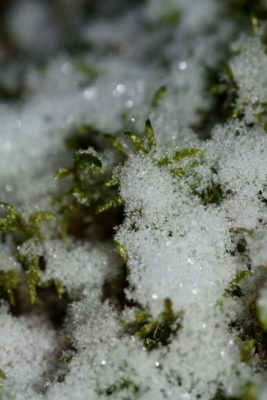
Glacial retreat in the Canadian Arctic Archipelago has uncovered plant species that were frozen for hundreds of years. A study by the University of Alberta examines the surprising resilience of bryophytes and their contributions to polar terrestrial ecosystems. “Our results include a unique successful regeneration of subglacial bryophytes following 400 [years] of ice entombment.”
The researchers were exploring high elevations of the Canadian Arctic, where the Teardrop Glacier sits at Sverdrup Pass. This glacier field was created during the freezing over of the Little Ice Age that happened from AD 1550 to AD 1850. Warming temperatures have caused rapid melting (3-4m per year), exposing areas that were hidden for hundreds of years. The Teardrop Glacier alone has been reduced 200m from its height during the Ice Age.

“We ended up walking along the edge of the glacier margin and we saw these huge populations coming out from underneath the glacier that seemed to have a greenish tint,” said lead researcher Catherine La Farge. These bryophytes refer to non-vascular embryophytes, and the term encompasses various vegetation and land coverings such as mosses, hornworts, and liverworts. Bryophytes do not grow seeds or flowers and reproduce by their spores. In high arctic environments, such as the study field, bryophyte flora is generally comprised of mosses and hepatics.
The scientists took samples of the vegetation back to their lab, where they were able to see how much the species had flourished in the warming temperatures. “When we looked at them in detail and brought them to the lab, I could see some of the stems actually had new growth of green lateral branches, and that said to me that these guys are regenerating in the field, and that blew my mind,” Dr. La Farge told BBC News.
Bryophytes have also been evaluated for their potential as biogeoindicators, which means they can be used to reveal areas suitable for biogeochemical prospecting and illustrate changes in levels of pollution, among other uses. Their discovery beneath glaciers will contribute to literation regarding ecosystem recovery and recolonization following extended periods of ice coverage.
So far, the melting glaciers at Sverdrup Pass have revealed cyanobacteria, green terrestrial algae and some entirely new species that will require further exploration and surely inspire many new studies. Additionally, their unusually well-preserved structure indicates exceptionally successful ice entombment. “It’s a whole world of what’s coming out from underneath the glaciers that really needs to be studied,” Dr. La Farge said, “The glaciers are disappearing pretty fast – they’re going to expose all this terrestrial vegetation, and that’s going to have a big impact.”
What are your thoughts? Please comment below and share this news!
This article (Tiny Frozen Plants Come Back From The Dead After 400 Years) is free and open source. You have permission to republish this article under a Creative Commons license with attribution to the author and TrueActivist.com


